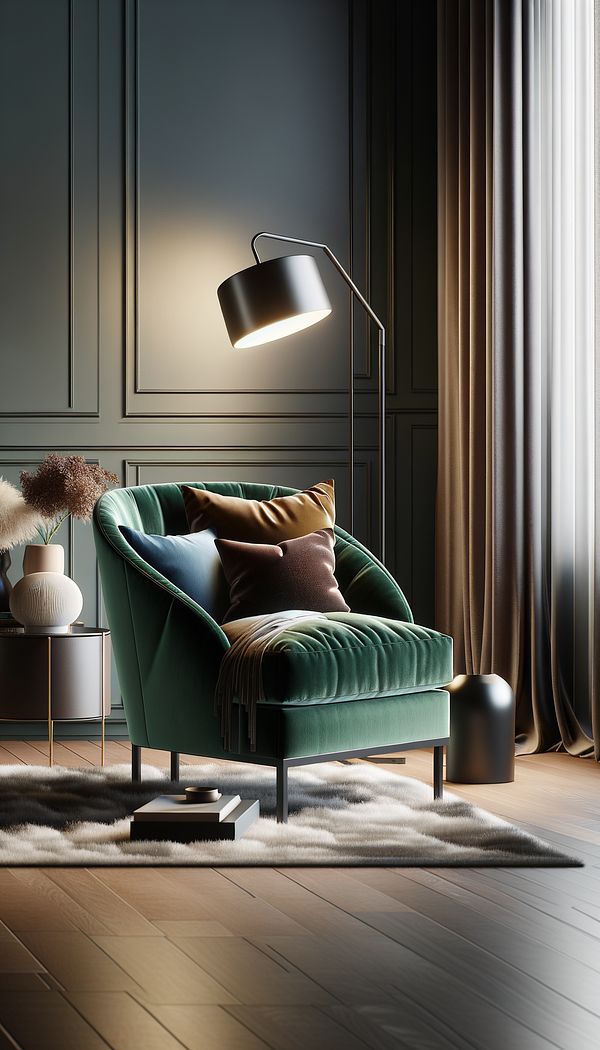What is a Slipper Chair?
A slipper chair is an armless, upholstered chair with short legs, originally designed for Victorian-era bedrooms.
Description
A slipper chair is characterized by its armless design and low seat height. This type of chair first emerged in the early 18th century but gained significant popularity during the Victorian era. It was initially used in bedrooms to assist people in putting on their shoes, hence the name "slipper chair." The low height made it easier for individuals to sit without bending excessively, which, at the time, was considered beneficial for those wearing restrictive clothing such as corsets.
Over time, slipper chairs have evolved beyond their initial utility to become versatile pieces of furniture that can be used in various settings, including living rooms, bedrooms, and entryways. Strongly linked with both functionality and elegance, these chairs are now designed with a wide variety of upholstery options and styles, ranging from traditional to contemporary. Their armless nature and comparatively smaller footprint make them an excellent choice for tight spaces or as an accent piece in larger rooms.
Moreover, slipper chairs serve not just a practical purpose but also an aesthetic one. Designers often select them for their ability to marry comfort with style, offering an opportunity to introduce textures, colors, or patterns into room décor. The simplicity of the slipper chair’s design allows it to blend seamlessly with various decorative techniques and design styles, making it a favorite among interior designers and homeowners alike.
Usage
In contemporary interior design, slipper chairs are often utilized as accent pieces in living spaces, providing additional seating that does not visually clutter a room. Thanks to their low profile and sleek lines, they can also be effectively placed in bedrooms for a touch of elegance or in entryways to offer a convenient spot for removing shoes or resting momentarily. Their versatility is further enhanced when paired with accessories such as decorative pillows or ottomans, allowing for a more personalized touch.
FAQs
-
Are slipper chairs comfortable?
Yes, despite their low height and armless design, slipper chairs are considered quite comfortable. This comfort is largely due to their generous seat width and cushioning, which can be made even more comfortable with additional cushions or throws.
-
How do you incorporate slipper chairs into a room?
Slipper chairs can be incorporated into a room as standalone accent chairs, in pairs to create a conversational area, or flanking a side table for a symmetrical look. Their design makes them suitable for various settings, from formal living rooms to casual reading nooks.
-
Can slipper chairs be used in small spaces?
Absolutely. Slipper chairs are especially beneficial in small spaces due to their armless design and compact footprint. They can provide necessary seating without overpowering the room or obstructing sightlines.
Practical Application
When choosing a slipper chair for your space, consider the existing décor and aim to complement or contrast it with your chair's upholstery. In smaller spaces, opt for chairs with thinner legs and more open designs to maintain a feeling of spaciousness. Additionally, don’t hesitate to use slipper chairs as opportunities to introduce a pop of color or pattern into the room, as their simple silhouette can handle bold choices without overwhelming the space.
-
BrocadeBrocade is a rich, decorative fabric often woven with a raised pattern.
-
Bird’s-EyeBird’s-Eye is a distinctive pattern found in maple wood.
-
HassockA hassock is a thick, firm cushion used as a footstool or for kneeling.
-
Rice Carved PostersRice carved posters are decorative elements found on furniture, showcasing intricate designs carved into wood that resemble stalks of rice.
-
RetroRetro refers to a style that draws inspiration from the past, specifically from the 1950s to the 1970s.
